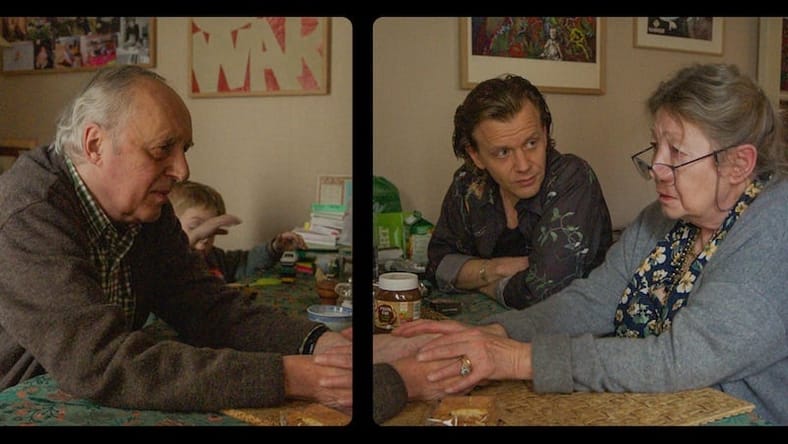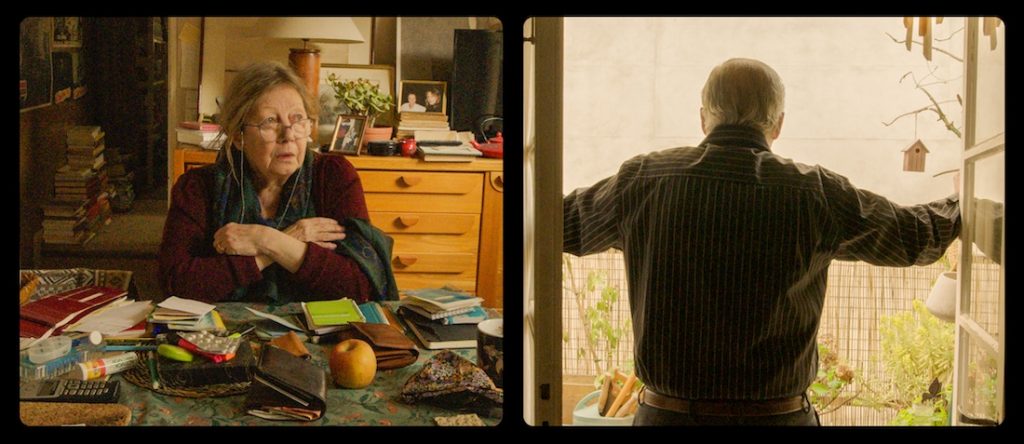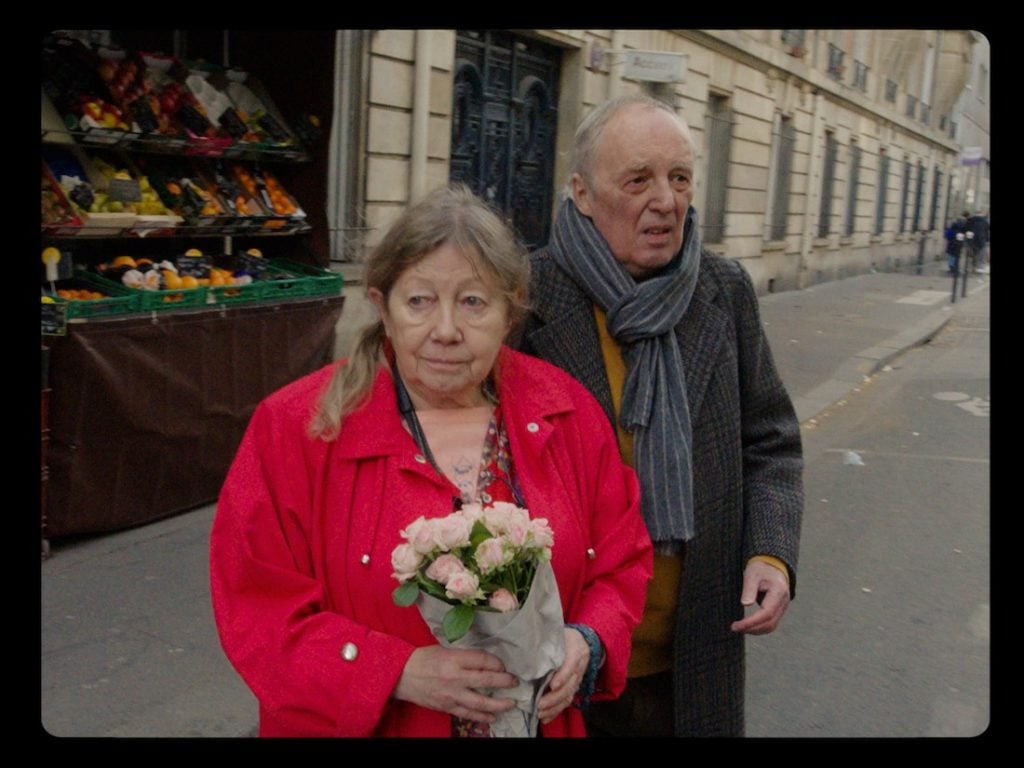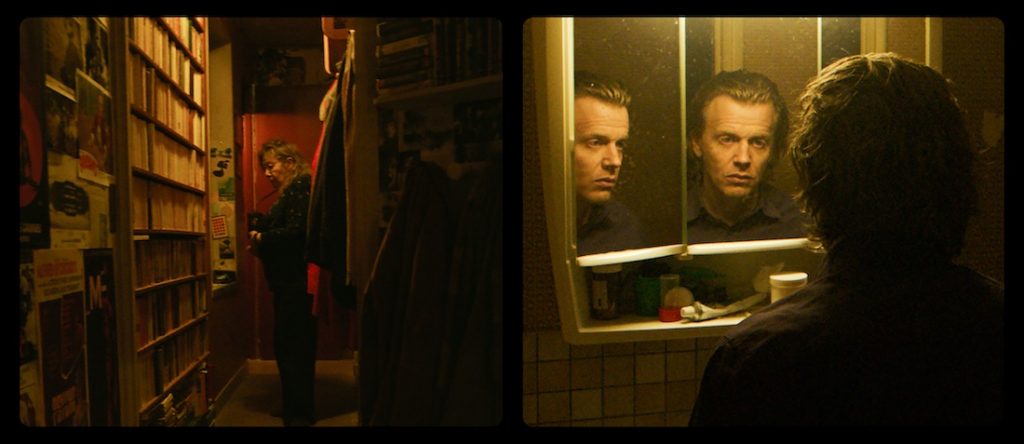
“Working with Gaspar Noé is quite unique,” says Vortex cinematographer Benoît Debie.
This uniqueness manifests in a myriad of ways. First, there is the screenplay. Debie says Noé’s script for their first collaboration together, 2002’s Irreversible, was only three pages. Two decades later, the trend continues with a 10-page script for Vortex. “It is good for me, so I don’t have to read too much,” Debie jokes.
“Actually, the 10 pages had big, big letters. So with little letters, it would have been a six- or seven-page script,” Noé tells MovieMaker.
Vortex is an intimate drama from the French-Argentine bad boy. Noé is notorious for his filmmaking provocations, which include (but are not limited to) an abortion scene in Enter the Void and lots of unsimulated sex in Love, which was shot and released in 3D.
So critics were surprised when Vortex premiered at Cannes last Spring — and turned out to be a sensitive portrait of an elderly married French couple struggling with the wife’s dementia.
In Vortex, master Giallo director Dario Argento plays a film critic working on a new book about the connection between dreams and cinema, while his wife (French legend Françoise Lebrun) struggles with worsening cognitive functions. The couple’s son, Stéphane (Alex Lutz), is sympathetic, but also a struggling drug addict who can’t give his parents the help they need.

Dario Argento’s character escapes for air in Vortex, from director Gaspar Noé. Photos courtesy of Utopia
The Split Screen
“He’s not just a DP, he’s like a brother,” Noé says of Debie, his closest collaborator. In six features over 20 years, the two have always pushed what the camera can do. This is evident in the opening shot of Irreversible as a forever- swirling camera descends deep into the basement of a nightclub called The Rectum, and it is evident now in Vortex, which employs split- screen cinematography throughout.
Noé previously experimented with split screens in two films commissioned by fashion giant Saint Laurent: 2019’s Lux Æterna and the 2020 short “Summer of ’21.” Noé knew that he wanted to use split screen on Vortex, but never thought, until he made the film, that it would be all split screen.
The first day of shooting, Noé and Debie shot a combination of conventional single- camera setups and some double-camera sequences. Because they were shooting digitally, Noé reviewed the footage that evening and made a discovery: “It was evident that it was much more interesting with the split screen than without.”
The next day, they reshot their single- camera setups using two cameras. Debie operated one, and Noé the other. (Noé often operates his own camera, including on Irreversible and 2018’s Climax.)
Did his producers freak out about the late- stage pivot?
“I don’t talk too much to the producers,” Noé says. “I talk to Benoît, my cinematographer. I talk to my line producer. I talk to my assistant director. But I’m not into that kind of relationship with producers — I mostly do it my way.”

Dario Argento and Françoise Lebrun play a French family in Vortex, directed by Gaspar Noé and lensed by Benoît Debie
Stabilizing in Post
Debie is a little taller than Noé, and so his handheld camera usually followed the taller Argento. But this meant that his camera’s POV was slightly higher than that of Noé’s camera, which was usually following Lebrun. When the two frames appeared side-by-side, even a minor difference in height was glaring. The solution was to shoot extra wide frames and then adjust their heights in post- production.
The extra wide frames also served another purpose.
Handheld sequences can be disorienting in film. And two different handheld shots, side-by-side, could quickly lead to motion sickness for audiences. Though Noé notoriously used high-frequency signals in the Irreversible sound design to intentionally disorient his audience, that kind of effect was not the intention here. So the extra-wide frame also allowed for the shakiness to be stabilized in post-production. Noé previously used this trick for the long tracking shots in Climax.
While Noé uses all the framing and stabilizing tools available to him in post, there is one thing that he prefers to capture completely on set: color.
“He’s always asking me to have the image mostly done so he doesn’t have to do a lot in post-production. So we try to expose and to adjust the color during the shooting. So the color grading in post is usually quite easy and sharp because it’s always there already during the shoot,” Debie says.
Dividing the Day
“Usually with Gaspar the prep is quite short,” Debie says. For Vortex, there was about a month of pre-production. This is because Noé wishes to leave ample room for discovery on set.
“He doesn’t like to prep too much because he wants to see during the shooting exactly what’s going on, in terms of the acting, in terms of the camera, maybe in terms of the lighting. And so this is something we are doing during the shooting,” Debie says.
The long takes that are a trademark of Noé’s films afford him some freedom on set.
“With Gaspar, he takes the day for one shot, which is a scene usually, because it’s a long shot,” Debie says. “This is quite nice for us and for the actors, because you focus only on one thing and we don’t have to change the camera angle and the lighting all the time. And, he also takes time to wait for the good light, if we are using the sun from a window.”
Argento mostly appreciated this approach.

In Vortex, directed by Gaspar Noé, Stéphane (Alex Lutz) helps his parents, but has his own problems
“Dario had a lot of fun doing the movie,” Noé says. “He doesn’t like to do more than two or three takes because he’s not used to asking more than three takes of his actors. So after three takes: ‘Ah, OK! Do you really need me to stay, because I want to go back home,’ or whatever.”
Debie has worked on more traditional sets, and understands how valuable it is to spend extra time to get a shot right.
Also read: Gaspar Noé: Things I’ve Learned As a Moviemaker
“Sometimes I’m shooting with directors and we are shooting 30 or 40 takes per day. It’s crazy. It’s more like a fast-forward movie,” Debie says.
He then offers up this advice.
“Instead of shooting 10 shots to make sure you have enough for the edit, it’s better to think about your shot and to take the time to do it well.
“I have the feeling now that this is the world. We are trying to go faster and faster. And at the end, it’s difficult to do it well because we are working too fast.”
Tech Box
Camera: Two ARRI ALEXA Mini LFs
Lens: Laowa 15mm
Lighting: Natural light and practicals
Colorist: Marc Boucrot
Vortex, directed by Gaspar Noé and lensed by Benoît Debie, opens in theaters today.
Main image (above): Often the two cameras in Vortex were focused on the same scene from complementary angles
Share:

